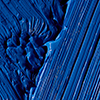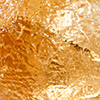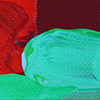Bone Black pigment

BURNING BONES TO CREATE PIGMENTS IS AN ANCIENT PRACTICE.
Like bone white, bone black is made by putting fragments of animal bones into a crucible and surrounding them with blazing coals. However, to prevent the bone turning to ash, the vessel is covered to stop air from getting in. Exposure to intense heat in the absence of oxygen turns the bones into carbonised char. After the char has cooled, it is pulverised in a mortar and pestle.
Found in prehistoric, Egyptian, Greek and Roman art, bone black was used throughout the Middle Ages and Renaissance. The 16th-century Dutch painters, in particular, made vivid use of its dense physical nature to depict garments.
Medieval artisans refined the process by washing the pigment with water, filtering it and grinding it even finer on a stone slab. This increased the intensity of the colour. Depending on the quality of preparation and the type of bone used, a variety of black hues can be created, all the way from a blue-black through to brown. Up until the Middle Ages, bone black was not used as widely as charcoal black, probably because of the hardness of the raw material and the difficulty of grinding it down to a fine powder.
Bone black is still in use today, but often sold under the name ivory black. Genuine ivory black was made by charring waste ivory pieces and the supply was always limited because of the scarcity of ivory. However, with the outlawing of the ivory trade, the pigment now sold under this name is actually a bone black with added carbon content to increase its darkness




